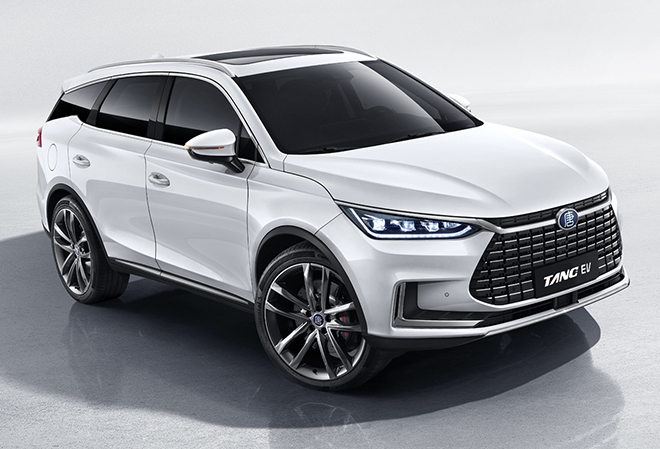
China’s formidable auto industry has so far failed to find a foothold in the North American or European markets. Many industry observers believe that the country’s prominent push for electrification has little to do with concern about climate change, and much to do with the country’s quest for a seat at the top table of the global auto industry.
Now we’re seeing signs that China’s “electrify and conquer” strategy is paying off—Chinese EVs are beginning to go on sale in Europe, and at least one brand is already seeing strong sales.
MG, the iconic British brand now owned by the Chinese firm SAIC Motor, accounted for almost 2 percent of Europe’s EV market in the first quarter. MG’s ZS EV, a small SUV, is available in Norway, the Netherlands, Italy, France and the UK. In the latter, it garnered 10 percent of the EV market, making it the UK’s third-best-selling BEV, behind the Tesla Model 3 and the Nissan LEAF.
MG is not an electric-only brand—EVs represented only 39 percent of its 2,300 first-quarter sales. However, its electric model has been an important contributor to its European success, MG UK Sales and Marketing Manager Daniel Gregorious told Automotive News Europe: “If it wasn’t for electric it would be much, much tougher to [achieve such strong sales].”
Chinese automakers have been storming the walls of Europe for several years, and some have been forced to sound the retreat. Jiangling and Brilliance withdrew from the European market in 2005 and 2007, respectively, after their vehicles performed poorly in crash tests. Great Wall Motor and Qoros Auto also were worsted and retired from the field.
BYD has become one of the leaders of the global electric bus market, but it has had less success with efforts to sell its e6 electric taxi in Europe and the US. The company is pushing ahead in Europe with due caution. “I’m very careful about launching a model,” BYD Auto Europe Managing Director Isbrand Ho told Automotive News Europe. “If you launch successfully, you can rely on that success for many years to come. If you launch improperly it will take many years to fix that. [Great Wall] was the wrong market, the product was not right, the image was not right, the aftersales and spare parts were not in place, and it failed miserably.”

BYD’s return to the European EV market will be led by the Tang SUV, followed by an electric sedan called the Han. The company will focus first on e-mobility leader Norway, and will work with a local importer, RSA. “I believe you need bricks and mortar to service the vehicle, especially when these vehicles are new and the brand is unknown,” Ho said.
More Chinese EVs are on the way. Volvo’s Polestar brand plans to begin deliveries of its Polestar 2 EV in seven European markets in August. Other brands planning European EV launches include JAC EVs, Aiways, Byton, BAIC and Nio.
By trying to hold back electrification as long as possible, European automakers have given their Chinese rivals a priceless gift, says Berlin-based analyst Matthias Schmidt. However, he believes the opportunity comes with a time limit: in 2025, the next round of EU carbon-reduction targets will kick in, forcing the Europeans to get serious about EVs. The Chinese have “a five-year window to break into the market before it effectively becomes closed,” says Schmidt.
If one or more of the upstarts are able to seize the moment, China’s long-cherished dream of global automotive glory might be within reach. “While the established brands are marketing EVs with the handbrake still partially engaged, this is the one big chance for the Chinese to enter the market,” said Schmidt. “They could be a force to be reckoned with.”
Source: Automotive News Europe
source https://chargedevs.com/newswire/watch-out-europe-the-chinese-are-coming-and-theyre-driving-evs/
No comments:
Post a Comment